Metal Ridge Cap Roll Forming Machine Supplier & Manufacturer
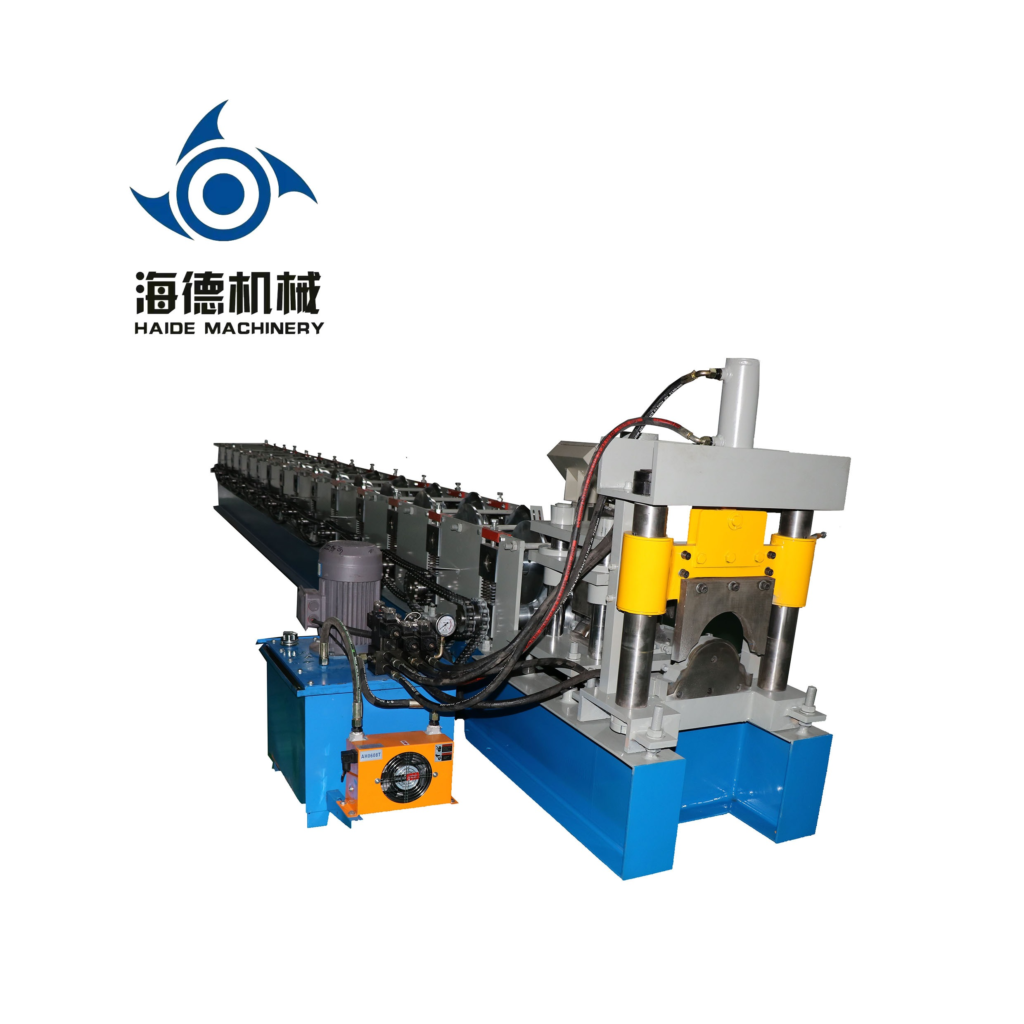
Metal Ridge Cap Roll Forming Machine
Customize your own glazed tile roof roller forming machine.
Compared with the traditional roof board, it has the characteristics of low price and long service life. The general thickness is 0.3-0.8mm, and the feeding width is usually 1000mm.
- Whatsapp:+86 19833726222
- Email:admin@haidejx.com
Application and Function of Ridge Cap Roll Forming machine
A Ridge Cap Roll Forming Machine is specialized equipment used in the manufacturing of ridge caps, which are essential components in roofing systems. These caps cover the ridge of a roof, where two roof planes meet, providing a finished look and preventing water from penetrating the roof.
Functions and step of ridge cap making machine
Material Feeding: The machine starts by feeding metal coils into the system. These coils are typically made of steel, aluminum, or other durable metals.
Roll Forming: The fed material passes through a series of rollers that gradually shape it into the desired ridge cap profile. The rollers are precisely engineered to ensure uniformity and accuracy.
Cutting: Once the ridge cap is formed, the machine cuts it to the required length using a hydraulic or mechanical cutting system.
Control System: Modern machines are equipped with computer-controlled systems (PLC) that allow operators to set and monitor various parameters like length, thickness, and production speed.
Finishing: Some machines may include additional features such as embossing, perforating, or coating to provide the ridge caps with specific finishes or functional properties.
Types of Ridge Cap Roll Forming Machines
Manual Ridge Cap Roll Forming Machines: Simple and cost-effective but require manual operation and supervision.
Semi-Automatic Machines: Partially automated, offering a balance between cost and automation.
Fully Automatic Machines: High-end machines with advanced features like automated feeding, cutting, and control systems for maximum efficiency and precision.

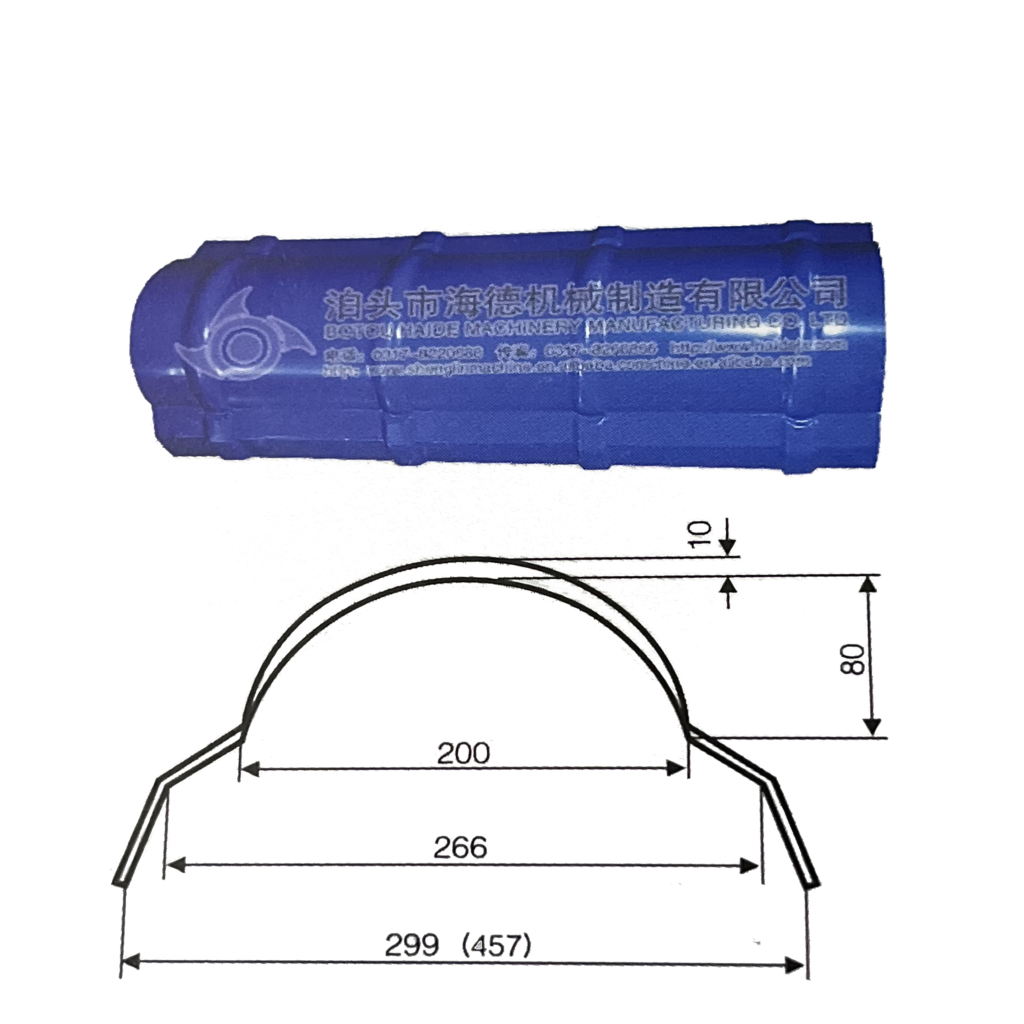
Applications of metal roof ridge cap
Metal ridge caps can block ventilation, rainwater, and pests.
The ridge cap is the most important step in sealing a metal roof structure. Located at the top of the roof or ridge, the metal ridge cap connects two adjacent metal roof panels at the seams and conceals the continuous ridge ventilation system. Poor-quality metal ridge caps or improperly installed ridge caps can lead to poor roof sealing, causing trouble for homeowners or business owners.
What shape can the ridge tile forming machine press?
Shapes include: circular roof tile, semi-circular roof tile, rectangular roof tile, corrugated roof tile, diamond shaped roof tile, irregular roof tile.
The commonly used arc-shaped roof ridge tile pattern in our factory:
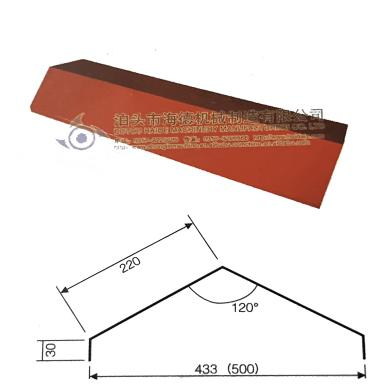
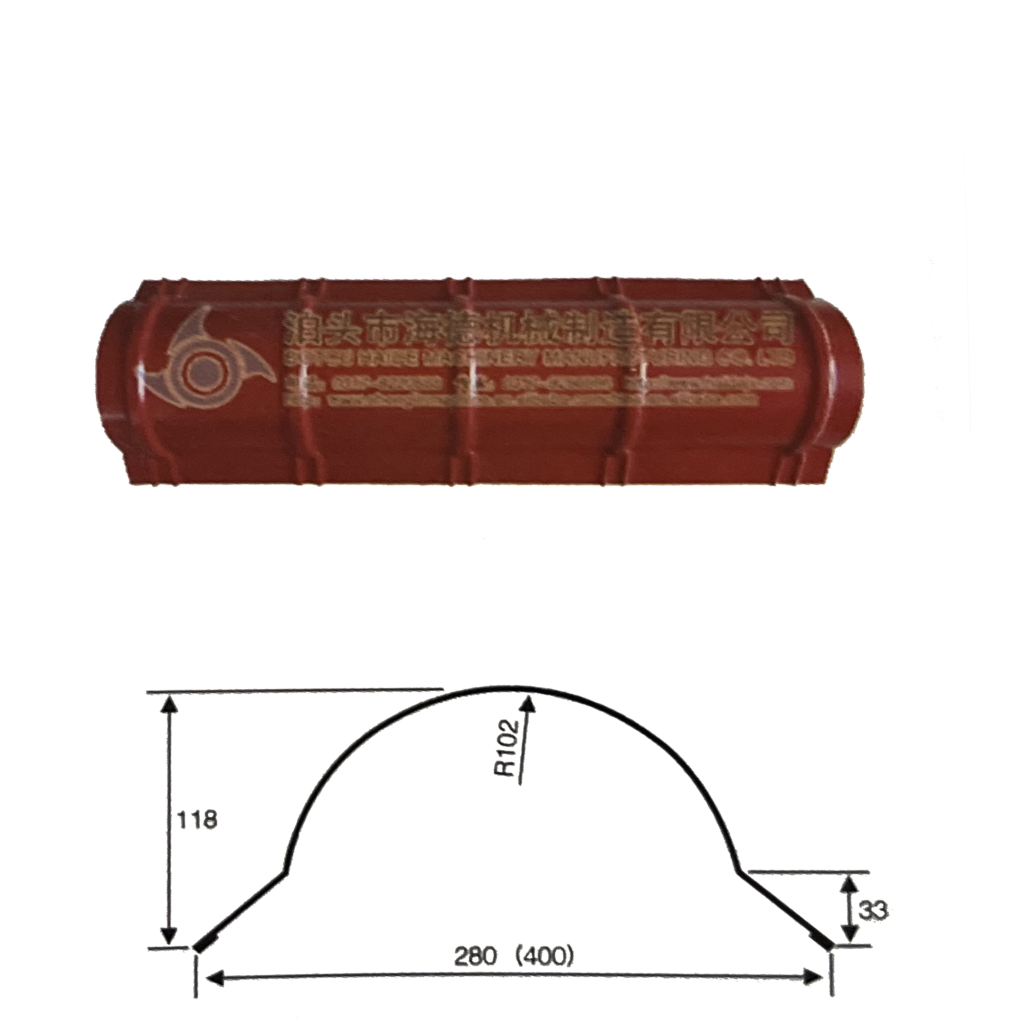

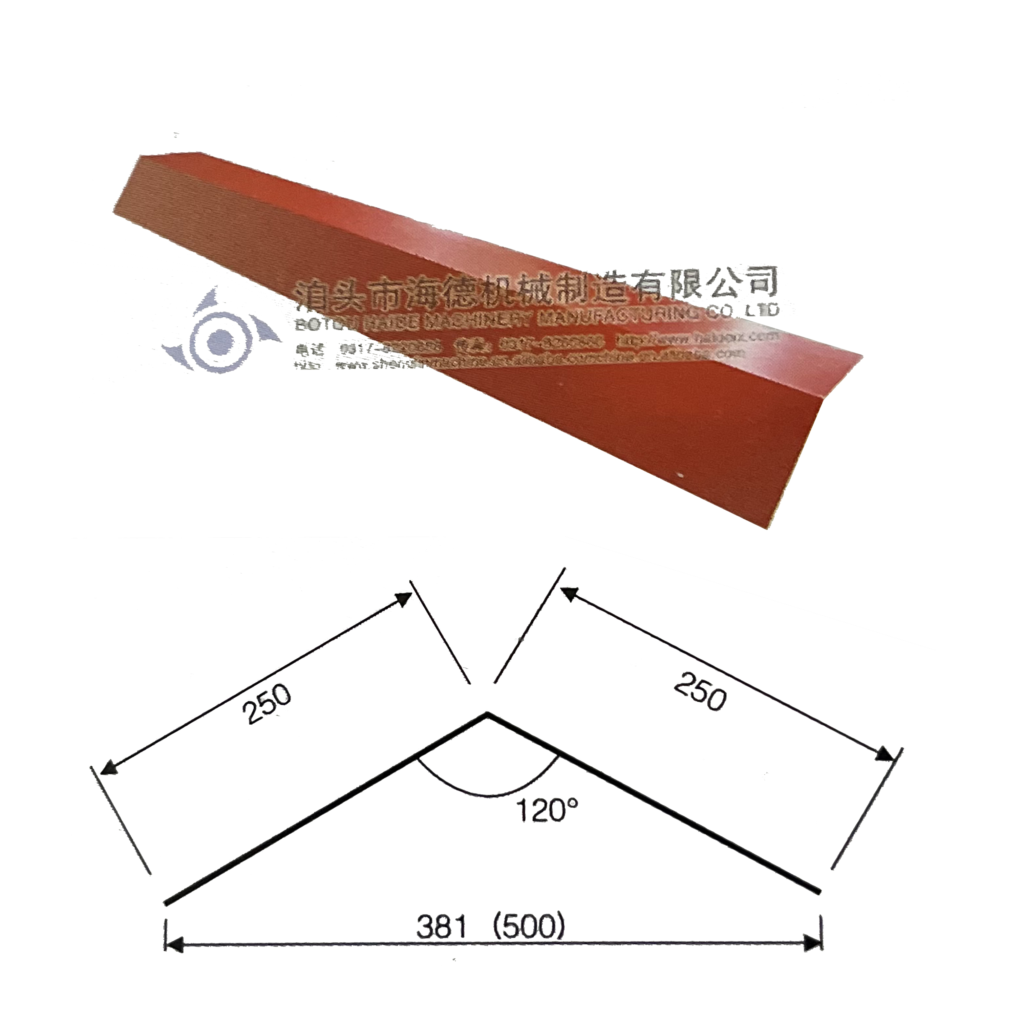
The difference between perforated and unperforated arc-shaped roof tile patterns:
Curved roof tiles are commonly used for roof decoration or waterproofing, and their design can enhance the aesthetics and functionality of buildings. For curved roof tiles, the main difference between “punched” and “unperforated” lies in the installation method, usage environment, and performance characteristics of the product.
Punched arc roof ridge tile:
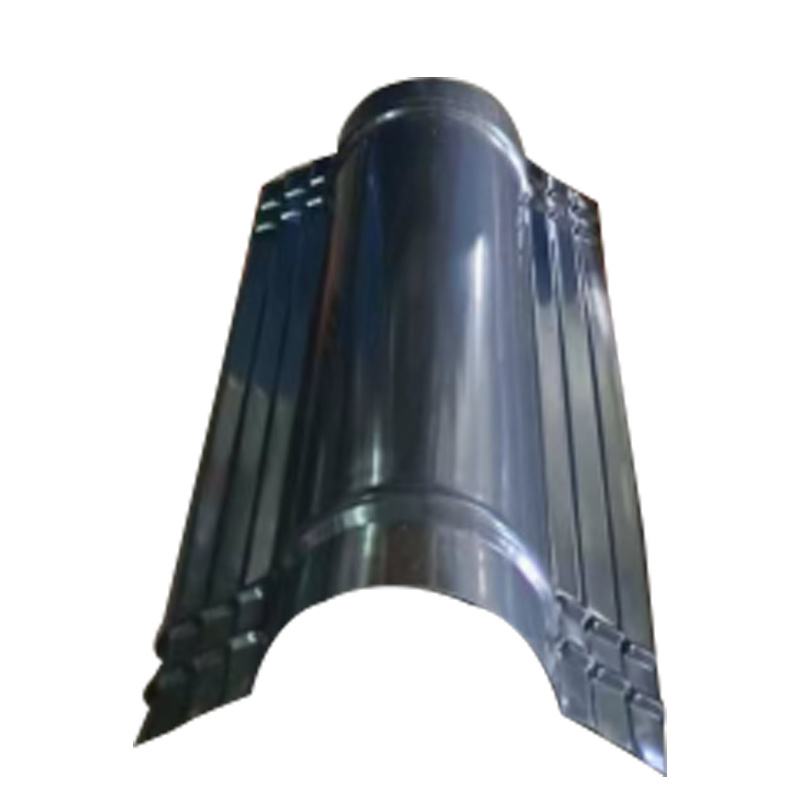
1.Installation and fixation: Punched arc-shaped roof tiles are pre drilled at specific positions during the production process, and these holes are usually used for easy installation and fixation with nails or screws.
2.Adaptability: The preset hole positions can help workers quickly and accurately locate and install, improving construction efficiency.
3.Ventilation and drainage: In some cases, punching holes can also have a certain ventilation or drainage effect, which helps reduce the problems caused by water accumulation.
Non punched arc-shaped roof ridge tile
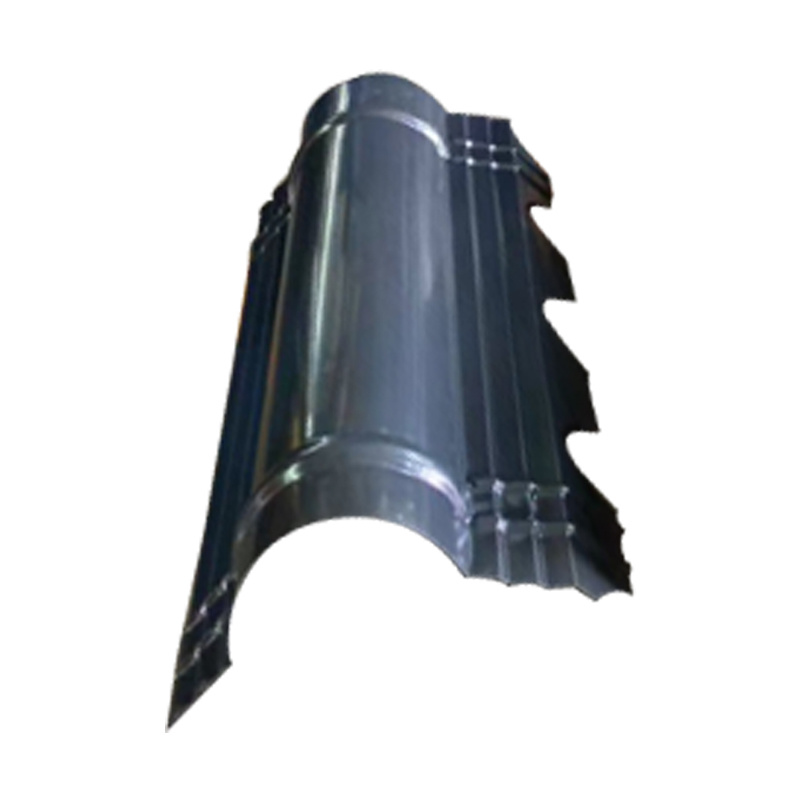
1.Installation flexibility: The absence of preset hole positions means that on-site drilling is required during installation, which increases the time cost of installation but also provides greater flexibility.
2.Sealing: Drilling holes on site according to the actual situation and adopting appropriate sealing measures (such as using waterproof tape or sealant) can improve the overall sealing of the structure and prevent rainwater leakage.
In summary, the choice between punching and not punching depends on specific application scenarios and personal preferences. Punched tiles are easier to install quickly and suitable for large-scale standardized operations; Non punched tiles can provide better sealing and installation flexibility in certain special environments. When making a choice, it is also necessary to consider factors such as local climate conditions and building structures.